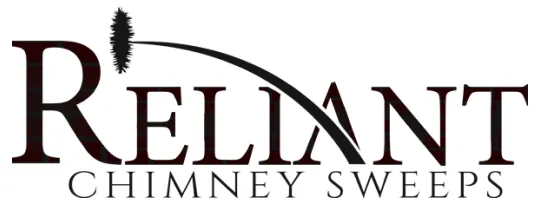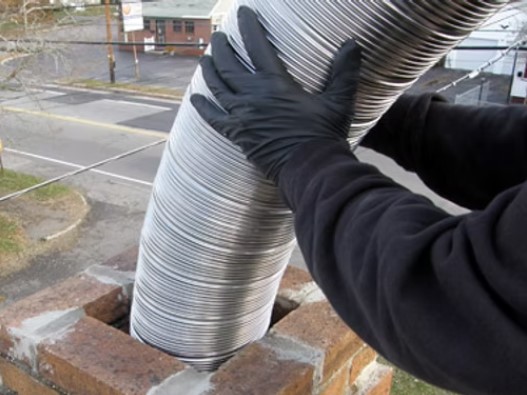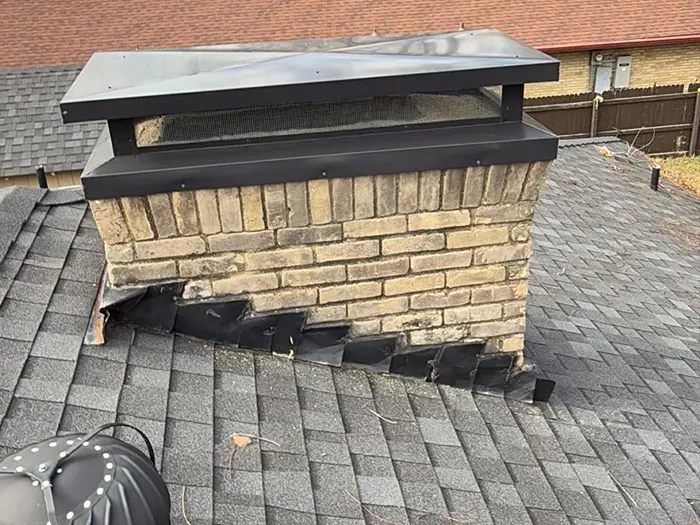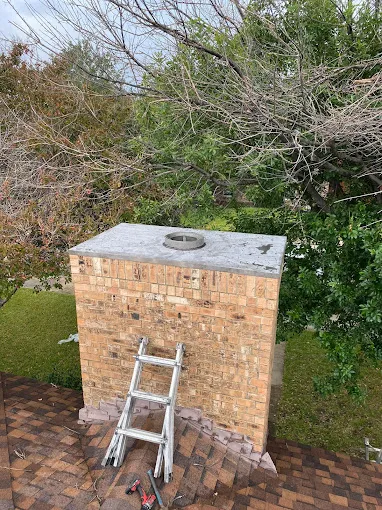When was the last time you thought about your chimney liner? If your answer is somewhere between “never” and “what’s a liner?”—you’re not alone. It’s one of those things homeowners rarely see but absolutely need. Much like a roof leak or a failing brake light, a damaged chimney liner can sneak up on you with quiet consequences, until it’s no longer quiet.
At Reliant Chimney Sweeps, we’ve seen firsthand what happens when chimney liner damage goes unchecked, and trust us: it’s not the kind of surprise you want to find out about in the middle of winter.
What Exactly Is a Chimney Liner?
Before we dive into warning signs, let’s clear up the basics. The chimney liner is the unsung hero of your fireplace system. It lines the interior of your chimney flue, serving three main purposes: it protects your home from heat transfer, shields the brick and mortar from corrosive byproducts, and improves the efficiency of smoke and gas venting.
Think of it like the insulation inside your walls or the lining in your favorite coat; it’s not always visible, but it’s doing heavy-duty work behind the scenes. When that liner starts to fail, though, the risks can range from minor inefficiency to serious fire hazards or toxic gas leaks.
Why Chimney Liner Damage Is a Big Deal in Texas Homes
You might be thinking, “It’s Texas. How often am I really using my fireplace?” True, the Lone Star State isn’t known for harsh winters, but when cold snaps roll in (and they do), fireplaces go from decorative to essential real quick.
A compromised chimney liner, even if rarely used, can still allow heat or flammable gases to escape into your home’s structure. In older homes or those with heavy wood-burning usage, this becomes even more critical. Combine that with the occasional barbecue smoke or gusty wind stirring debris into the flue, and you’ve got a system that needs regular attention—liner and all.
The Smoke Signals: Common Signs of Chimney Liner Damage
Now that you know why chimney liners matter, how do you know when something’s wrong? Unfortunately, the liner doesn’t wave a red flag when it’s damaged—but your fireplace will drop some hints if you know where to look.
Let’s start with one of the biggest giveaways: excessive creosote buildup. If you notice thick, flaky soot or dark, tar-like residue in your firebox or flue, it could be a sign that your liner isn’t venting properly. A faulty liner disrupts airflow, allowing byproducts to cling to the walls and build up faster than they should.
Next up is smoke in the home. If your fireplace starts puffing smoke into the room like it’s had a bad day, your liner might be cracked or blocked. Poor airflow causes smoke to spill back into the house instead of exiting cleanly through the chimney.
Cracks or spalling in the chimney masonry can also be a symptom. When the liner is compromised, heat and gases can damage the exterior structure over time, causing bricks to chip or mortar to crumble. This isn’t just an eyesore—it’s a structural red flag.
Don’t ignore odd smells, either. A strong, campfire-like odor, especially when the fireplace isn’t in use, can indicate liner damage or creosote saturation. And if you detect a metallic or chemical smell, it could signal that gas byproducts are leaking where they shouldn’t be.
Finally, be aware of water damage. If moisture gets into your chimney and the liner is already compromised, it accelerates the wear and can lead to rust, corrosion, or internal leaks. Water stains around the chimney or damp patches near the fireplace should never be ignored.
Gas or Wood? The Liner Still Matters
Whether you use a traditional wood-burning fireplace or a gas insert, your chimney liner is still working overtime. Many homeowners assume that gas fireplaces are “set-it-and-forget-it” systems. While it’s true they burn cleaner, they also generate moisture and acidic gases that can eat away at an unlined or damaged flue.
Gas-burning appliances require specific types of liners to safely handle these byproducts. So if you’ve ever converted a wood fireplace to gas without updating the liner, consider this your friendly nudge to schedule an inspection.
Can You See the Damage Yourself?
In most cases, no. Chimney liner issues are usually hidden inside the flue, making them nearly impossible to assess with the naked eye. That’s why professional inspections are so important.
At Reliant Chimney Sweeps, we use camera systems that can go deep into the chimney to reveal hidden cracks, gaps, corrosion, or debris buildup. It’s the only way to know what’s going on inside your chimney without tearing it apart.
What to Do If You Suspect Damage
If your fireplace is acting off, smoky starts, weird smells, or signs of soot, it’s best not to play the guessing game. Ignoring the problem won’t make it go away. It usually means more costly repairs down the road. The smartest move? Call in the pros.
Our team at Reliant Chimney Sweeps will perform a full inspection and let you know exactly what’s going on inside that flue. If the liner needs repair or replacement, we’ll walk you through your options with total transparency and zero scare tactics.
We’ve worked with Texas homeowners and business owners for years, and we know how to tailor liner solutions that match your system, usage, and budget.
Don’t Let Your Chimney Liner Fail Silently
Your chimney liner might not be flashy, but it’s one of the most important parts of your fireplace system. When it’s in good shape, it keeps your home safe, your air clean, and your fire burning the way it should. But when does it start to wear out? That’s when trouble creeps in.
Whether you’ve noticed strange smoke behavior, a funky smell, or just haven’t had your chimney looked at in a while, now’s a great time to take action.
Reliant Chimney Sweeps is here to help Texas homeowners stay warm, safe, and informed. Schedule an inspection with our team today, and let us take a look before a small issue turns into a big problem.
Ready to check your chimney liner? Call us now for a professional inspection and peace of mind that your fireplace is in expert hands.




